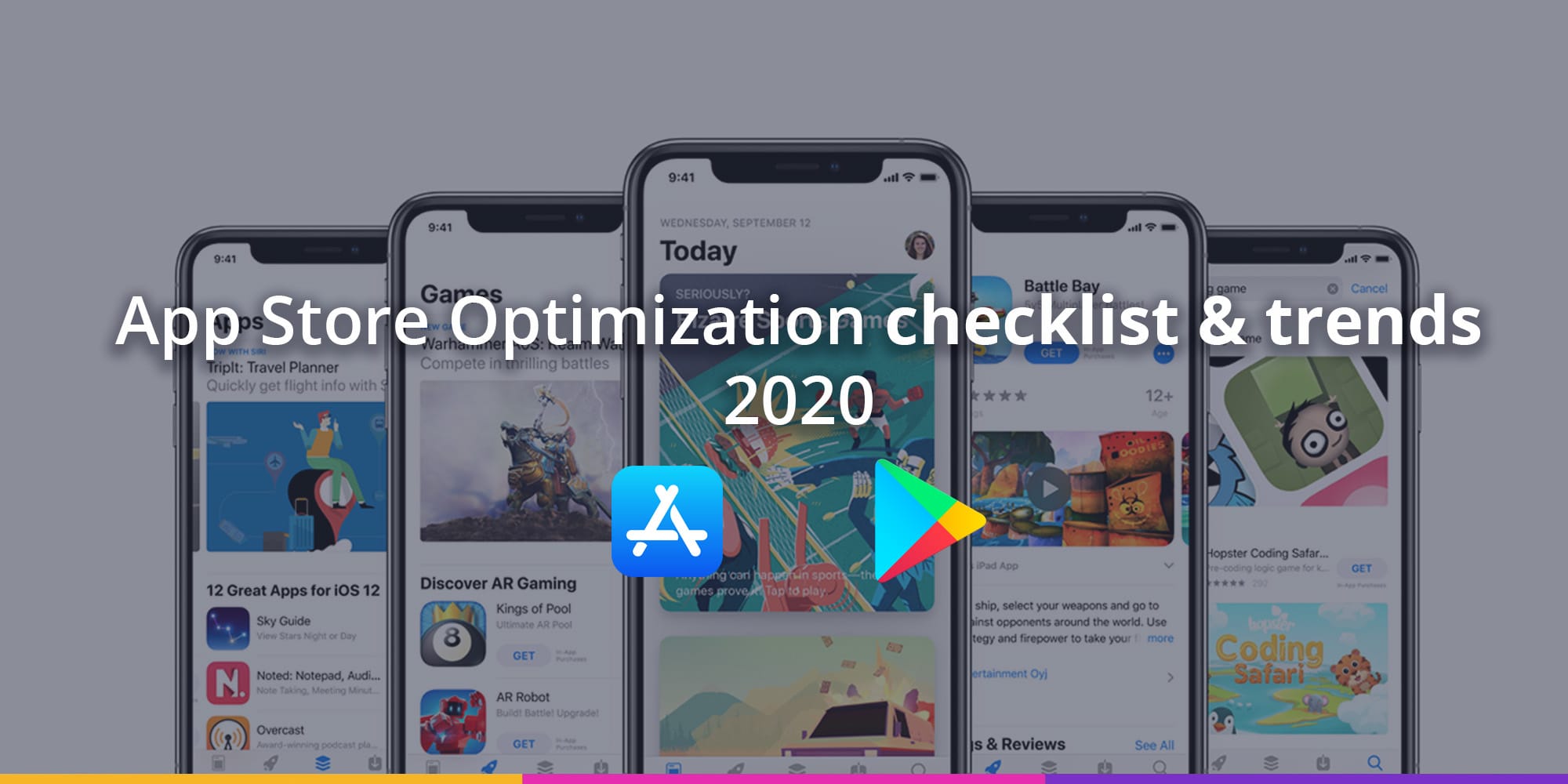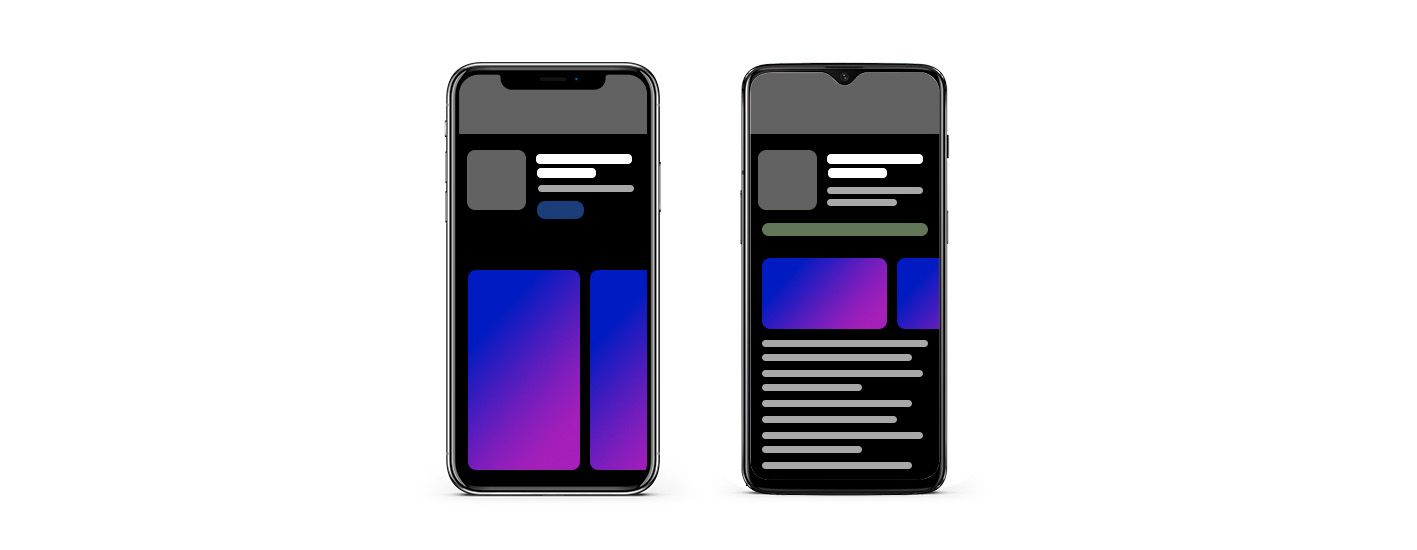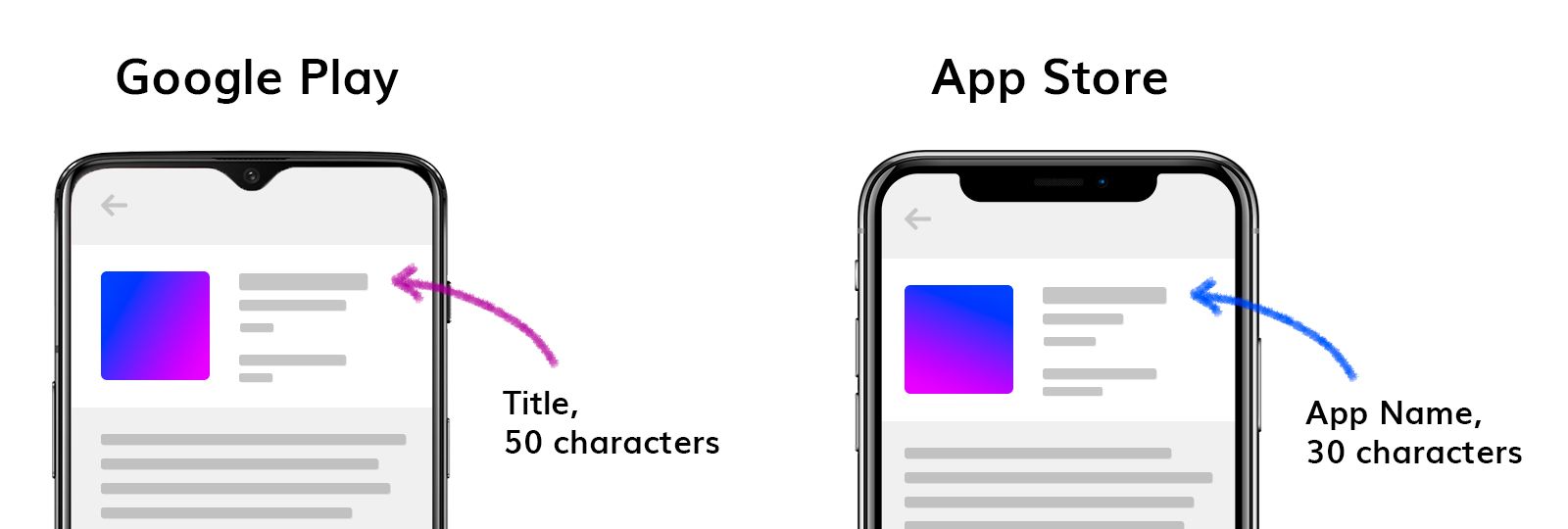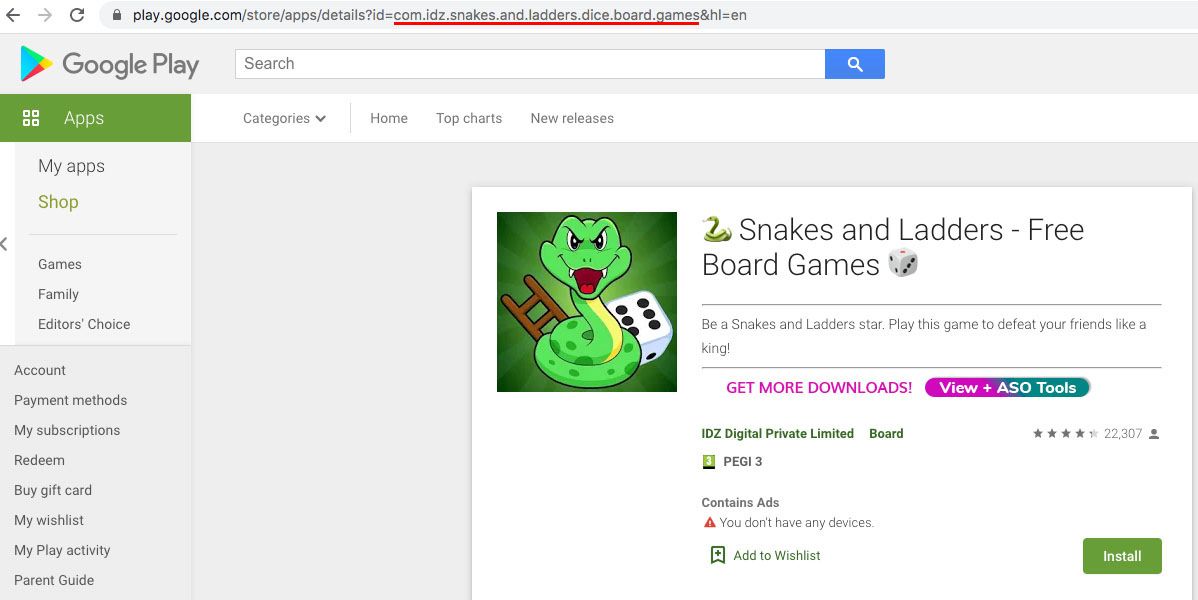App Store Optimization checklist & trends for 2020

ASO is and has always been an ever changing matter, and it will still be true in 2020. What changes are coming for this year? What should we expect in terms of ASO for the next months? Let’s study the upcoming trends in App Store Optimization and see which direction Mobile Growth is taking for this new decade.

Wait… just a quick reminder - what is ASO?
ASO in a few words
App Store Optimization is the process of optimizing, as its name suggests, a mobile app or game and constantly work on it to make it the most visible posible on the stores both in Search, when users are searching on a store, and in Explore, when they are browsing it.
ASO main goals are to increase the traffic to the app store listing and increase conversion rate (CVR) to get the maximum amount of organic and non-organic downloads possible. Working well on ASO enables the app or game to receive better-quality traffic with reduced UA costs.
Now that the base is set, let’s dive right into the topic and begin with our checklist. Ready?
2020 App Store Optimization Checklist
The first things we have on our checklist are the creative assets: app icon, screenshots, video preview, featured graphic - they all have a huge impact on users first impression and decision to visit / download the app, so it need to be fully optimized and make the difference.
ASO Visual assets
Focusing on 2020, the first advice that comes to mind is to keep the dark mode in mind and make sure that your creatives look good both on clear & dark mode. Also remember that the stores are different which means that the creatives should not be the same either for both Google Play and App Store.
More info: Why you Shouldn’t Apply Google Play A/B Testing Results to the App Store [Case Study]
Always test your creatives with A/B testing (with Google’s proper A/B testing tool for Google Play & with an external A/B testing tool such as Splitmetrics or StoreMaven for the App Store) to find out what works best for each field and each store.
Let’s begin with the first visual asset we think of and we actually see from a store listing: the icon.
✅ App icon
This is the visual element that everyone will see first about your app, and it has a huge impact on conversion rate to visit and to download. For these reasons, it is really important that you put hard work on finding the right icon. But what makes a good one?
- A good icon is scalable - it’s important that the icon is clear and understandable at any size
- It should be recognizable - the icon should represent the brand guidelines and users should recognize the brand when seeing it alone

- 2020 pro tip: ever worked on similar app cards visibility on Google Play? If you study similar apps, you’ll see that most similar apps have a VERY similar logo to the app they are similar to… 😉
These tips are only a very brief summary of all the things you need to take into account when working on icons (find all the detailed tips in our full app icon guide).
✅ Screenshots
Moving on to the next visual asset of the listing, the screenshots also have a heavy weight in the users’ decision to download an app or not. So, having good and impacting screenshots should definitely help you increase your app conversion rate to visit / download.

The most important screenshots are the ones the users see when entering the listing and without needing to scroll, ie. the first 1 or 2 for Apple and the first 2 or 3 for Google Play (according to the orientation of the screenshots, horizontal or vertical). Make sure they respect the following criteria:
- Display the real features that the app offers to the users - be the most genuine possible here so that it corresponds to what users will find when downloading the app + use the most attractive ones for the first screenshots.
- Provide quality content - quality screenshots will make users have more trust towards the quality of the app itself.
- Make them attractive - try and make the users curious and willing to know more about the product.
Also, make sure that you know all the right screenshots sizes for the different ones you need. If you take all these tips into account, you should see a positive impact on your conversion rate. And there is something else that you can work on for your screenshots that might help as well...
✅ Video
When working on your app screenshots, it is the time when you need to ask yourself if you should add a video preview there. And actually not only ask yourself, but try, test, make different options and try your listing without video, with a video, with another one, etc. to see which option works best for the selected app. It might not always work, which is why you need to try it first. However, it is highly recommended for games - videos with the main gameplay will give users a much more precise idea of what the product is about and should definitely help the conversion rate to download grow. But again, always try ;)

Moving on to what’s next on our checklist, after visual assets, let’s focus on copy and what needs to appear in the textual fields of the listing.
ASO Textual fields
If visuals are gaining in importance, this is not a reason to leave textual fields aside. Let’s go on with our checklist and have a look at them all, beginning with the most important one, being the field that has the most impact both on rankings as well as on conversion rate.
✅ Title / App Name
The Title (on Google Play, up to 50 chars.) or App Name (on App Store, up to 30 chars.) is, together with the icon, the first element that users ever see of an app or game. This is why it has such a huge impact on conversion rate (to visit + to download). Thus, it’s really important for it to be impactful and make a great impression on users. But it does not only impact CVR. It is also the field that has the most impact in terms of keywords (Search), so make sure it contains the main and most relevant ones.

Want some tips to make the greatest 2020 Title / App Name possible?
- Make it forthright - a fancy way to say that users should understand directly what the app is about when they read it.
- Keep it short - you don’t want the name of the app to be too long. Make it short and add some main keywords (eg. Title / App Name = Name + keyword 1 + keyword 2).
- For Apple, do not repeat the keywords that are listed in the keywords or the Subtitle field as it won’t make them have more weight in Search.
✅ Subtitle / Short description
Moving on to the next field, the subtitle (on App Store, up to 30 chars.) / short description (on Google Play, up to 80 chars.) completes the Title / App Name. It affects Search and CVR both on App Store and on Google Play.

In both stores, it’s important you keep a balance between the main keywords you want to add there and producing a well-written copy, attractive and true to the product.
To make it more engaging, feel free to add a call-to-action (CTA). You can also add one or several emojis to make it more visual. In the end, these details will have an impact on users and their will to take action, ie. to visit the app listing and / or to download the app.
✅ Description
The description field (up to 4,000 chars. on both stores) works different for App Store and for Google Play.
On App Store, it does not affect keyword rankings so there is no need to work on search optimization there. Focus on making the description actionable, by highlighting its main features and choosing the written content carefully, always having your main audience in mind. The first sentence needs to be the most impactful as users don’t need to click on “read more” to see it, so choose its content wisely.
On Google Play, the description impacts keyword rankings, so it should be both actionable and searchable.

- Actionable: make it well-structured, organized, and make sure you highlight all the best feature of the app / game. Don’t forget to add a powerful CTA there to make user
- Searchable: use all the keywords and keywords combinations you can. Make the most of the 4,000 characters available but be careful - no keyword stuffing (it is penalized by Google and it has a negative impact on users’ impression and thus, CVR). The most important keywords should be added within the first and last 5 lines of the text, which are the ones that Google Play analyzes most to rank apps. Also, you can use HTML and emoji to optimize it even more.
✅ Developer Name (Google Play)
The developer name is also an important on-metadata factor as it also has an impact on keyword rankings on Google Play.
On Google Play, the developer name appears just below the Title, so first things first, it has an impact on CVR as users do not need to scroll down the listing to see it. It also has an impact on Search, so adding keywords there could help your app rank higher for those selected keywords. Also, Google Play keeps track of its historic, which can help you rank even higher.
An example of a good developer name would be: Developer Name: keyword 1 + keyword 2 + etc.

💡 On App Store, the developer name is situated at the bottom of the listing so it almost has no impact on CVR. The only thing that impacts the App Store is the developer lifespan - the longer it has existed, the more Apple trusts him.
✅ URL (Google Play)
If it has an impact on Search, it means that it is ranking keywords. For this reason, you should add some keywords in this field, just like in the following example:

If you do so and add a few of your main keywords there, it could actually have a positive impact on your keyword rankings, but don’t forget that ASO is made up of on-metadata & off-metadata factors - you will likely start to see results if you apply this tips when you start getting a consistent amount of downloads and user ratings / reviews.
✅ Keywords field (App Store)
This field is specific to the App Store, and is a quite important place to add most important keywords. There you have up to 100 characters to fill, and we’re going to tell you how to fully optimize these 100 characters.
- Do not use any space, always separate keywords with a comma (keyword1,keyword2,keyword3…).
- Do not repeat the keywords that you already mention with the App Name or Subtitle, it won’t give these keywords more weight.
- Do not add the same work in a singular and plural form - just add it in singular and it will be enough for the App Store to understand that it also includes the plural form.

Follow these 3 very simple tips to make the most out of your keywords field, a very precious one when we consider that Description does not index keywords on the App Store. So, work wisely on this field to make sure you include the most important keywords.
✅ Promotional text (App Store)
The promotional text is another field specific to the App Store that provides your with 170 characters to make users want to download your app. Indeed, this field does not have an impact on keyword rankings, so the only thing you need to focus on there is Conversion Rate. It means that its content need to be catchy and impactful to make users click on the download button.

And don’t forget about…
Apart from optimizing the store listing fields, there are other things you need to make sure you have on your ASO checklist.
✅ Listing localization
Localizing your listing is more important than you think, and it could bring you a lot of downloads your were not expecting. Make sure you provide every country / language with its own translation and adaptation of the content (a simple translation might not be enough as every country has its own culture and habits). Localization with a proper translation for each local will most likely improve your conversion rate, so it is definitely an important element you need to have on your checklist.
✅ KPIs & metrics
It might seem obvious, but checking on your KPIs is also necessary to your app / mobile game growth. You need to study the evolution of your main metrics, and analyze results according to the changes you made to your listing to be able to identify what works and what doesn’t. TheTool and all the data it provides allows you to always keep an eye on them.

✅ Competition
Studying the competition will provide you with a lot of valuable insights for your ASO strategy. It will enable you to:
- Identify good practices + what is working for your competitors
- Be aware of things you should not be doing
- Get inspiration
- Find ways to differentiate from others
In short, there’s a lot you can understand just from studying your competitors, and we have great tools to help you with that, such as our great Timeline feature:.

✅ Being creative + testing
Final item in our checklist: don’t be afraid to try, test, and let your creativity take the lead! Implementing creative changes to the listing might provide you with great surprises - or not, but you never know if you never try.
2020 ASO trends
Now that your checklist is set, you are ready to roll and start having fun with ASO. But before we leave you to it, let’s have a quick look at what we should expect in App Store Optimization this year and what we should pay attention to.

App quality
The quality of the product itself, ie. the app or the mobile game, will have more impact on the app’s visibility. A very well optimized listing will not have as much impact if the app itself does not work properly, so be careful to the development and make sure you work hard on it to provide users with the best product you can, without errors, ANRs and crashes (or at least make sure you can fix then as fast as possible). In 2020 and through time, the stores will be less and less tolerant with product issues.
Replying user reviews
The replies that you provide users within the reviews section will be crucial in 2020. Take time to show your users that you care about their opinion and their satisfaction. If you can’t reply all the reviews, make the negative ones your priority. By replying them, you can understand what is the issue, solve it or if not possible at least inform the user that you take the comment into consideration. Doing so will enable you to turn some of the unsatisfied users into satisfied ones and improve your app average rating.

Explore / Browse traffic is constantly growing
In 2020, explore traffic on the stores will become more and more important. In the last months / years, the stores are providing users with more and more ways to browse and discover new apps and games outside of Search, and in 2020, the same path will be followed. It is important to keep this trend in mind when optimizing your app, and not to focus only on Search and keywords, but also on how to make your app discoverable in Explore.
The main channels of browse are: featured, Top Charts and similar / related apps.
More customized stores
Stores are being more custom-made and adapted to each user’s use and behavior. With all the data (installs, uninstalls, apps use, etc.,) the stores are gathering with time, and thanks to artificial intelligence, they able to suggest very accurate and adapted content to each user, as you can see with the “Recommended for you” or “You might also like” sections in Explore.
More ads within the stores
There are a lot of different spaces where you can discover new apps when browsing the stores, and what we suspect is that with time, some of these sections become promotional spaces when apps and games will be promoted by ads. This trend goes together with the Explore traffic that will most certainly keep on growing in 2020.

To sum up
You now have the keys to optimize your app or game on the stores with this ultimate checklist. Our advice is to go through it on a regular basis as, as mentioned, ASO is an ever changing matter. With the main trends we identified for 2020, you have an idea of what you can expect for this year. We hope this article was helpful and please, feel free to share any additional insight with us, we’d be happy to exchange on the topic. Happy optimizing :)
Written by Maud Panier
Maud is Content & Social Media Manager at TheTool. She enjoys sports, traveling and is always willing to discover new things and to face new challenges.



